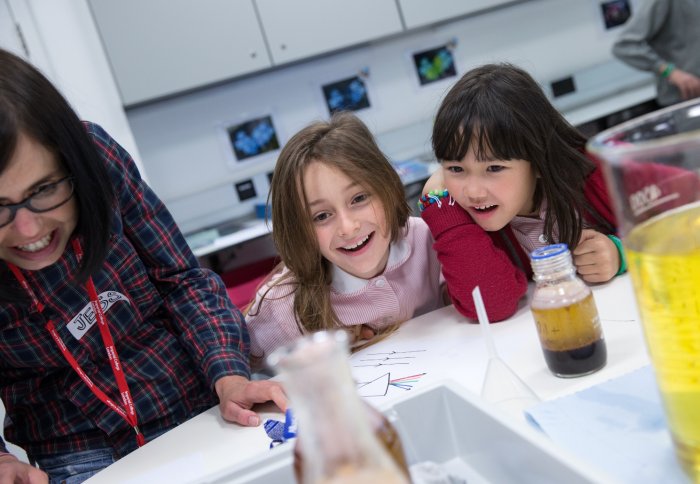
Children watch glass disappear in the Explore Zone

Children from local primary schools were let loose inside Imperial Festival's Explore and Research Zones last week, for the Festival's Schools Day.
Schools Day gives London schoolchildren the chance to meet Imperial College London researchers and explore some of the science on offer at the Festival.
In the Research Zone, the pupils had a go at controlling devices with their brainwaves, making a plastic-like human chain, and creating bracelets representing different strands of genetic code.
They were guided by Imperial researchers, who were on hand to explain their work and demonstrate the science behind it.
The children also carried out experiments in the Explore Zone, investigating how non-Newtonian fluids can switch from liquid to solid, watching how an optical illusion can make glass seemingly disappear and witnessing a fire tornado.The Zone is run by staff from Imperial's Outreach team, which was set up to raise aspirations, change perceptions and stimulate an interest in science, engineering and medicine.
The pupils, aged between 7 and 11, came from Larmenier and Sacred Heart Catholic Primary School, William Davis Primary School, St Nicholas Preparatory School and Marlborough Primary School.
The photos below show Schools Day in action. 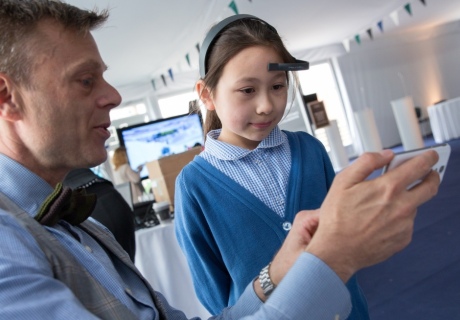
In the Research Zone, a pupil from Larmenier and Sacred Heart Catholic Primary School controls a computer game with her brainwaves, assisted by Dr Pascal Durrenberger from the Department of Medicine.
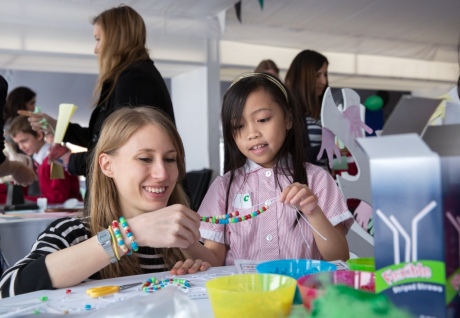
A pupil from St Nicholas Preparatory School makes a bracelet representing a strand of genetic code, assisted by Colette Roach from the Royal Brompton & Harefield NHS Foundation Trust.
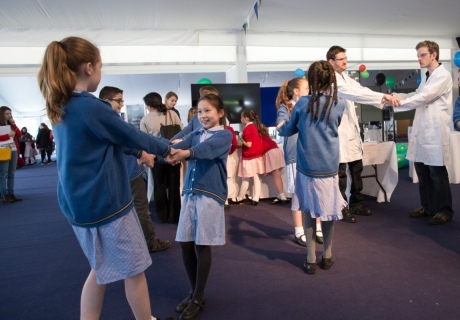 Children from Larmenier and Sacred Heart join hands and spin around to investigate the properties of plastics, guided by Dr Charles Romain and Dr Seb Pike from the Department of Chemistry.
Children from Larmenier and Sacred Heart join hands and spin around to investigate the properties of plastics, guided by Dr Charles Romain and Dr Seb Pike from the Department of Chemistry.
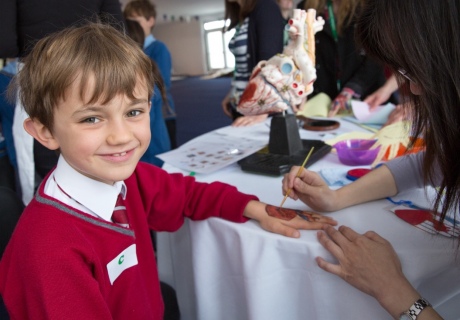
In a new take on wearing your heart on your sleeve, a pupil from St Nicholas has an anatomically correct heart painted on his hand by Carmen Chan from the NIHR Biomedical Research Unit at Royal Brompton & Harefield NHS Foundation Trust.
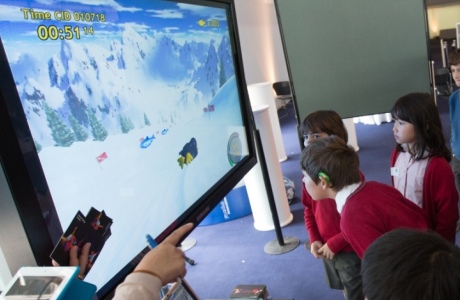
A pupil from St Nicholas controls a penguin zooming down a mountain using a motion sensor worn over his ear, developed by researchers from the Hamlyn Centre.  "Who knows what makes planes fly?" asks a researcher from the Department of Materials. The children made their own paper planes and turbines to investigate what makes things fly efficiently.
"Who knows what makes planes fly?" asks a researcher from the Department of Materials. The children made their own paper planes and turbines to investigate what makes things fly efficiently.
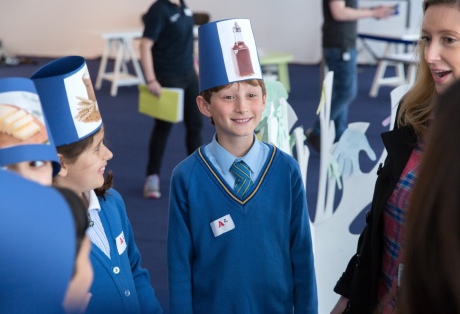 Pupils from Larmenier and Sacred Heart explore what can happen when ingredients change in our genetic 'recipe,' with the aid of some artfully-designed hats.
Pupils from Larmenier and Sacred Heart explore what can happen when ingredients change in our genetic 'recipe,' with the aid of some artfully-designed hats.
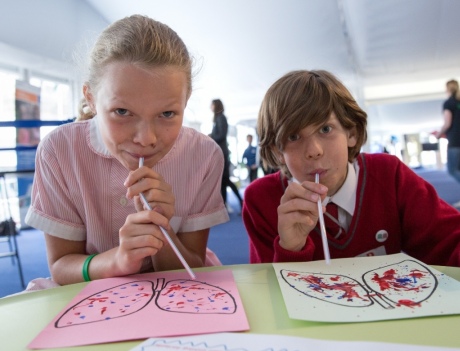 Pupils from St Nicholas blow paint through straws to explore lung function.
Pupils from St Nicholas blow paint through straws to explore lung function.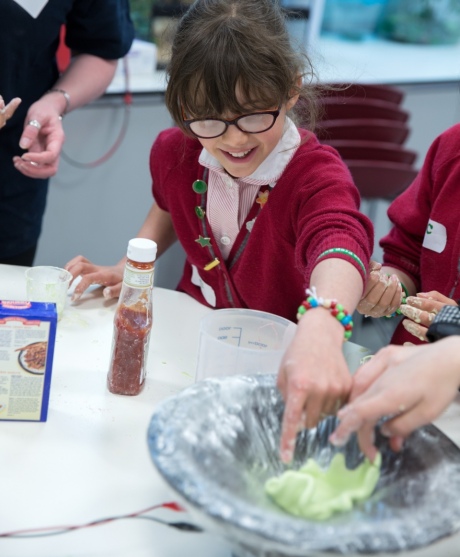
In the Explore Zone, a pupil from St Nicholas gets to grips with non-Newtonian Fluid. When it is placed on a speaker playing a very low bass note, this cornflower and water mixture 'misbehaves' and forms a solid mass.
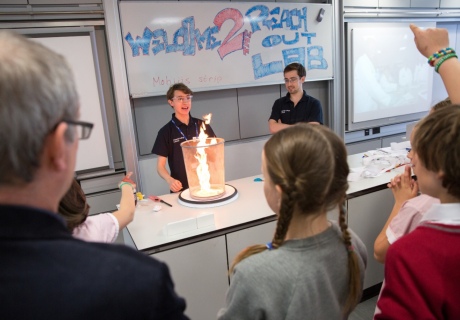
Luke Bacon and Dan Beatrup from Outreach demonstrate a fire tornado, which shows how fluid dynamic effects can be simulated in a laboratory.
Article text (excluding photos or graphics) available under an Attribution-NonCommercial-ShareAlike Creative Commons license.
Photos and graphics subject to third party copyright used with permission or © Imperial College London.
Reporter
Laura Gallagher
Communications Division

Contact details
Tel: +44 (0)20 7594 6701
Email: l.gallagher@imperial.ac.uk
Show all stories by this author




Leave a comment
Your comment may be published, displaying your name as you provide it, unless you request otherwise. Your contact details will never be published.